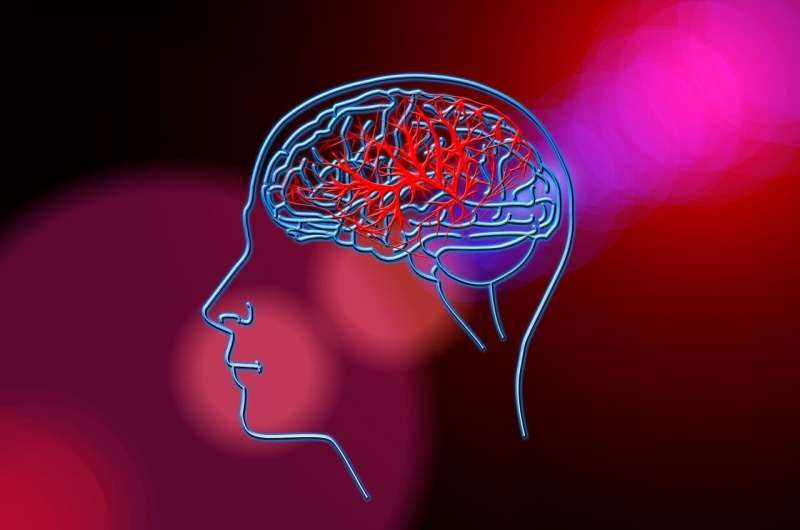This article has been reviewed according to Science X's editorial process and policies. Editors have highlighted the following attributes while ensuring the content's credibility:
fact-checked
peer-reviewed publication
trusted source
proofread
New evidence informs risk factors, diagnosis and care of patients with CVT stroke

A new scientific statement from the American Heart Association emphasizes the need to increase patients' and physicians' awareness of cerebral venous thrombosis (CVT) to improve the recognition of this condition and initiate prompt medical treatment.
The new statement, "Diagnosis and Management of Cerebral Venous Thrombosis," was published today (Jan. 29) in the journal Stroke. A scientific statement is an expert analysis of current research and may inform future clinical practice guidelines.
This statement reviewed the latest evidence to update the Association's 2011 statement that outlines recommendations for diagnosing and managing CVT, focusing on advancements in treatment approaches, including anticoagulation (blood thinners), endovascular therapies (procedures using a catheter to reach the blood clot inside the vascular system) and surgery.
Cerebral venous thrombosis (CVT) is a rare type of stroke in which a blood clot forms in the veins that drain blood from the brain. CVT accounts for less than 3% of all strokes, and it often affects younger individuals; women who are pregnant, postpartum or using oral contraceptives; and people with a tendency to form blood clots. Since the previous statement, additional risk factors associated with CVT have been identified: obesity and active COVID-19 infection.
The diagnosis of CVT is challenging because the most common symptoms are persistent headaches and seizures, which may mimic other neurological conditions such as migraines or epilepsy. Doctors typically use brain imaging (MRI/CT scans) to identify CVT, however, these tests may not be routinely ordered for patients presenting with headaches or seizures.
Recent evidence suggests that vascular imaging of the venous system using new MRI sequences or techniques may improve the likelihood of the diagnosis of CVT.
The progression of CVT may be difficult to predict. Although 80%–90% of individuals with CVT achieve functional independence, many experience residual symptoms such as headache, fatigue, low mood and impaired cognitive performance. About 10%–15% of patients may experience severe outcomes, including death, disability or loss of independence, despite intensive medical treatment.
Standard treatment of CVT involves anticoagulation therapy to prevent growth of the blood clot, to facilitate reopening the blood vessel and to prevent recurrent blood clots. Recent studies show the use of direct oral anticoagulants appears to be a safe and effective alternative option to vitamin K antagonists (VKAs), such as warfarin. There is a need to identify other non-invasive treatments that are able to quickly dissolve blood clots and reduce pressure in the veins.
Endovascular treatment involves using a catheter to remove the clot and restore blood flow. These procedures are typically reserved for patients with evidence that the blood clot is moving toward the heart, for those with neurological deterioration despite medical therapy or for those who cannot take blood thinners.
According to the statement, decompressive craniectomy, or surgical removal of a portion of the skull, is a life-saving procedure to consider for patients with severe CVT or progressive neurological deterioration. Although there are no randomized controlled trials of this surgical approach, a meta-analysis of 51 studies found that surgery within 48 hours of admission may decrease mortality and result in improved functional outcomes in patients with severe or progressive disease.
In 2021, the Centers for Disease Control and Prevention (CDC) and the U.S. Food & Drug Administration (FDA) found that adenovirus-based SARS-CoV-2 vaccines were associated with vaccine induced thrombotic thrombocytopenia (VITT), a condition that causes low blood platelet count and affects clotting.
Although CVT in VITT is rare, those who develop it have a poor prognosis with a mortality rate of up to 61% , with symptoms such as new onset of headaches typically beginning 5–24 days after vaccination.
There is no evidence of VITT in adults who received either the Pfizer or Moderna mRNA COVID-19 vaccines, and the Johnson & Johnson (Janssen) adenovirus-based COVID-19 vaccine was no longer authorized by the FDA as of June 1, 2023.
More information: Gustavo Saposnik et al, Diagnosis and Management of Cerebral Venous Thrombosis: A Scientific Statement From the American Heart Association, Stroke (2024). DOI: 10.1161/STR.0000000000000456





















